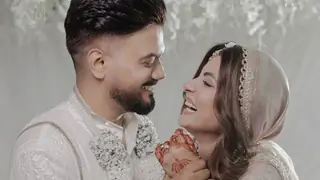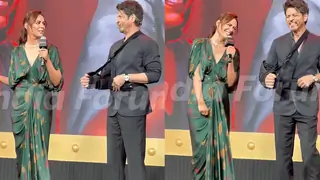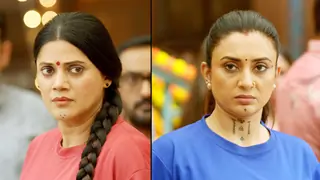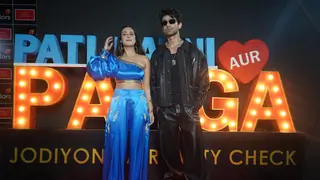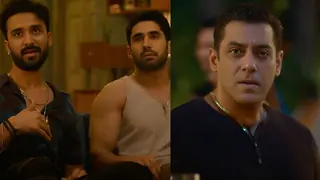A short introduction to Indian Music
Indian classical music is defined by two basic elements : it must follow a classical mode, the raga, and a specific rhythm or tal.
A music which follows the characteristics of this tradition is called classical - in opposition to Western classical music, where classical means belonging to a period of time (approximatively from 16th to 17th century).
This concept of classical music is, in that way, very open. A musician can "invent" new classical forms, new poetical forms, new modes, new rhythms and Indian instrument makers can produce new instruments.
All Indian classical music follows this rule even if some completely different styles exists side by side. To develop precisely a raga, the musician needs the presence of a drone, whatever the music : singers are always accompanied with the tambura or the harmonium, that produce the singer's tonic and dominant (SA and PA).
Classical Indian music is mainly divided into two branches, North and South. The South Indian music is called Carnatic, in reference of the Southern State of Karnataka, and the northern branch, Hindustani, in reference of the Hindi speaking region going to North-West Frontier and to Poorab, the East.
Carnatic music is nearly totally unified and the different schools are based on the same ragas (about 300 different ragas), same solo instruments, mainly the veena, flute, violin and same rhythm instrument, the mridangam and the ghatam.
The actual development of a concert has been codified recently, around 1920 by an eminent singer, Ariyakudi Ramanuja Iyer : a dozen of short pieces are enclosing a long "alapam, tanam, pallavi, or improvisation on notes, on rhythm and poem, a classical scheme you will find also in North Indian music, except for the short piece of music at the start. On the contrary, Hindustani Music has never been really unified, many styles and genres have been developed and encouraged by a family system now called gharana.
Those numerous gharanas all over North India have developed very different styles of music, genres and instruments.
The patronage of royal families (India has been a set of feudal states for all its history before 1948) has given those gharanas the "peace of mind" necessary to create, preserve and nourish an incredible amount of genres.
Today those are :
Dhrupad, the 15th century temple and court genre.
Qawwali, a 14th century Muslim fusion with Persian music.
Khyal, the 18th century most fashionable court music.
Thumri, the old dance oriented music,
and Ghazal, the Panjabi love song, in vogue from 19th century till now.
Each one of these names covers an incredible amount of different styles, and a layman will not make any connection between the music of instrumental court Dhrupad of the Dagar and a singer of Darbhanga Temple dhrupad.
Those genres are focusing more on a poetical form : Dhrupad, on strangely complex verse with no rime, Qawwali, on Persian couplet versification etc.
Originality comes from the fact that all those musics are inseparable of the poetry they are structured on. So even strings and percussion instruments always try to reproduce vocal music and its poems : the instrument talks, its speaks with words. Inside each genre (including Carnatic music), many ways of singing, or vanis (same roots as "voices") have been developed. In khyal, those vanis have disappeared and dozens of schools have emerged.
As we said earlier, musicians are not obliged to play a specific instrument on a style but the musicians and their family instrument makers have invented instruments suited to each style :
Rudraveena, surshringar and pakhawaj for Dhrupad.
Those are fantastic, tune oriented instruments that fit dhrupad's precise tuning obligations.
Sitar, sarod, sarangi, vichitraveena, flute, shehenai , santoor and tabla are suited to the fast playing speed of Khyal, Thumri and Tappa.








